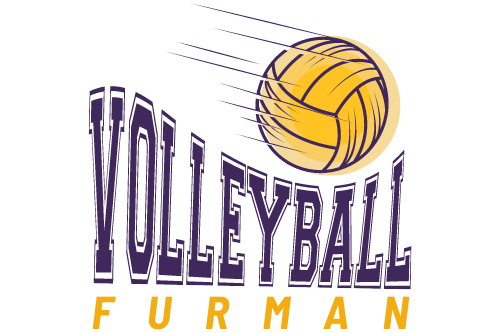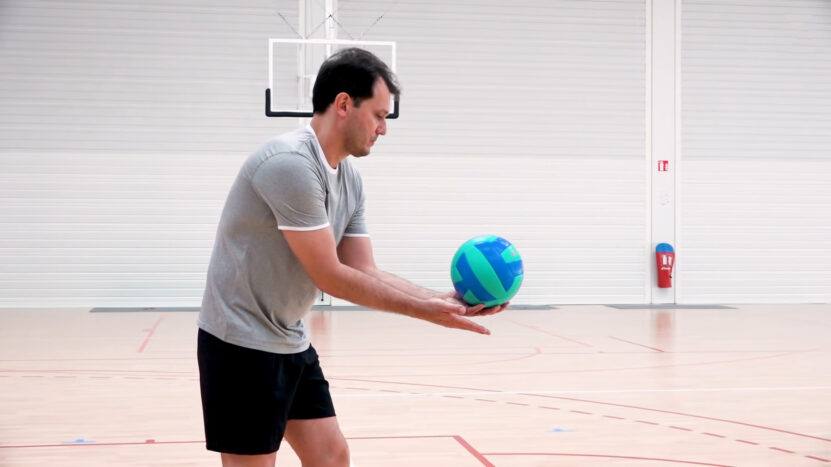Volleyball, a dynamic and fast-paced sport, demands a variety of skills, one of the most crucial being the overhand serve. This technique is key to starting a rally with power and precision.
But how exactly do you execute an effective overhand serve? It involves a combination of proper body positioning, precise ball toss, controlled arm swing, and strategic contact with the ball.
Having struggled myself, I’ll present you with the basics of physical and mental preparation, break down the serving technique into easy-to-follow steps, and address common mistakes to avoid.
Key Takeaways
- The overhand serve in volleyball involves a combination of body positioning, ball toss, arm swing, and ball contact.
- Effective serving starts with a stable stance, a relaxed yet firm grip, and proper body alignment towards the target. Mentally, focusing on the target area and maintaining confidence is crucial for successful serves.
- Key steps include a consistent ball toss, a rhythmic approach with specific footwork, a fluid and powerful arm swing, precise ball contact, and a complete follow-through.
- Avoid inconsistent tosses, over-swinging, and incorrect footwork. Advanced techniques include adding spin (topspin or float serve) and strategic serving by targeting weak players or gaps in the opponent’s formation.
Preparing for the Serve
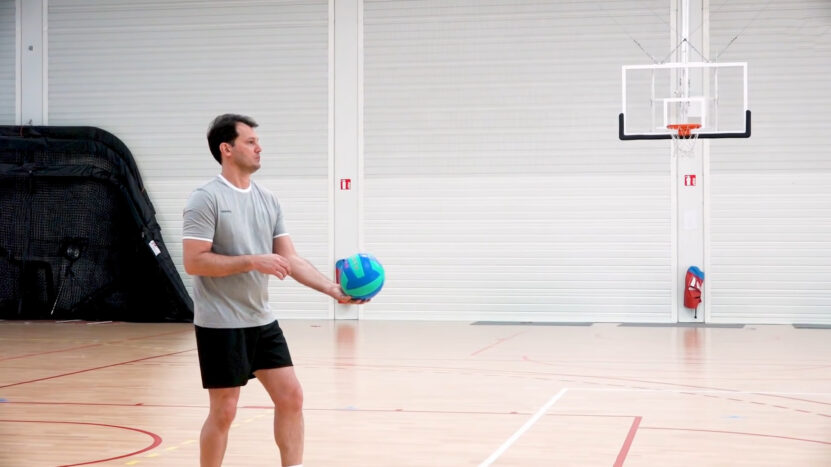
Physical Preparation
- Positioning: Stand behind the end line, feet shoulder-width apart. This stance provides stability and balance, essential for a powerful serve. Ensure your weight is evenly distributed across both feet for optimal movement.
- Grip: Hold the ball in your non-dominant hand. Your dominant hand should be in a fist or an open palm. The grip should be relaxed yet firm to avoid any wobble in the ball when it is released. Keep your wrist flexible to allow a full range of motion during the serve.
- Body Alignment: Align your body towards the target. Your shoulder and hip should face the direction of the serve. This alignment is crucial for accuracy, as it directs your energy towards your intended target. Keep your knees slightly bent to maintain a dynamic posture.
Mental Preparation
- Focus: Concentrate on the target area where you want the ball to land. Visualize the trajectory of the ball and the spot you aim to hit. This visualization helps in achieving greater accuracy in your serves. Clear your mind of distractions to maintain this focus.
- Be Confident: Believe in your ability to execute the serve successfully. Confidence comes from practice and understanding your capabilities. Remind yourself of your training and the successful serves you’ve executed in the past. A positive mindset can significantly impact your performance.
- Additionally, understanding the defensive maneuvers of your opponents, such as their ability to effectively intercept the ball with a defensive save, can help you strategize your serves more effectively.
The Serving Technique – Step-by-Step Guide
1. Toss
Toss the ball upward with your non-dominant hand. The height of the toss is crucial – it should be high enough to allow a full arm swing. The toss should be consistent and controlled, as it sets the tone for the entire serve. Avoid tossing the ball too forward or backward to maintain better control.
2. Approach
Take a small step with your dominant foot followed by a larger step with your non-dominant foot. This step sequence helps in generating momentum. The approach should be rhythmic and timed well with the toss. This movement is key to transferring your body’s energy into the serve.
3. Arm Swing
Raise your dominant arm, bend your elbow, and then swing your arm forward in a whipping motion. The arm swing should be fluid and powerful, utilizing the entire range of motion of your shoulder. Ensure your arm fully extends at the point of contact for maximum power.
4. Contact
Strike the ball with the heel of your palm. The point of contact should be at the highest reach of your arm. Make sure to contact the ball squarely, as this affects the direction and speed of the serve. Your wrist should snap forward upon contact to impart additional force.
5. Follow-Through
Continue the arm swing even after the ball has been hit. This ensures maximum power and control. The follow-through is essential in directing the ball and reducing the risk of injury. It also aids in bringing your body back to a balanced position for the next play.
What to Avoid?
Inconsistent Toss
A poor toss can lead to a weak serve. Practice the toss to ensure consistency. An inconsistent toss makes it difficult to time your arm swing and approach accurately. Try to release the ball from the same height and position each time.
Over-swinging
Too much force can lead to loss of control. Focus on a smooth, controlled swing. Balance is key; power without control can be detrimental to your serve. Remember, the goal is to strike the ball effectively, not just forcefully.
Incorrect Footwork
Poor footwork can affect the power and accuracy of your serve. Ensure your feet are positioned correctly and move in a coordinated manner. Footwork is the foundation of a good serve, and practicing your steps can greatly improve your overall serving technique.
Advanced Techniques
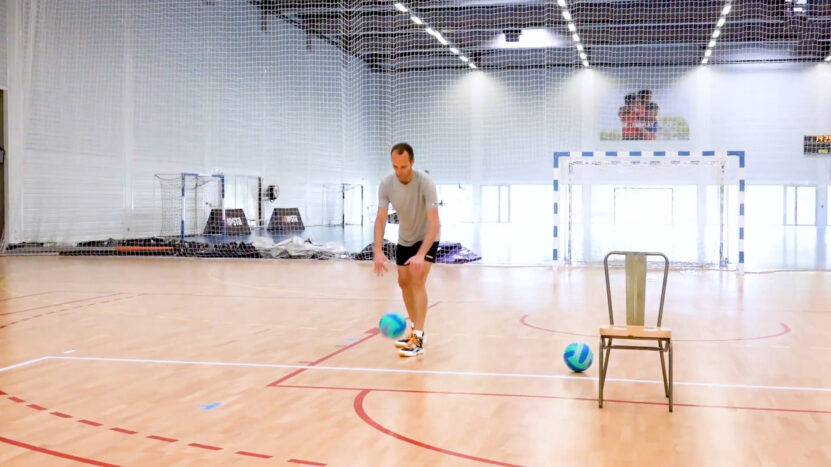
Adding Spin
Topspin Serve: Hit the ball slightly above its center to create a forward spin. This makes the ball dip faster, making it difficult for the opponent to predict. The topspin serve requires precise timing and contact points. Practice this to add a challenging element to your serve.
Float Serve: Strike the ball with no spin. This causes the ball to move unpredictably in the air. The float serve is effective due to its erratic trajectory, confusing the receiver. It’s achieved by striking the ball in a dead-center manner with a firm, flat hand.
Strategic Serving
Identify weaker players or gaps in the opponent’s formation and aim your serve accordingly. This strategy requires keen observation and adaptability. Adjust your serving technique to exploit these weaknesses in the opponent’s court.
Keep your opponents guessing by changing the speed and direction of your serves. This unpredictability can throw off the opposing team’s rhythm. Practice serving different areas of the court and at varying speeds to develop this skill.
How to Practice Your Serve?
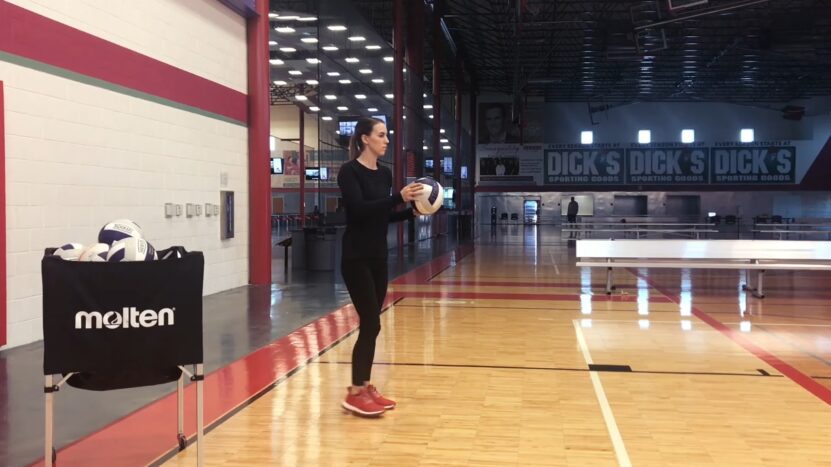
Practice your serve repeatedly to build muscle memory. Consistency is key to developing a reliable serve. Set a daily or weekly goal for the number of serves to help track your progress. Set up targets on the court and aim to hit them with your serve.
This drill improves accuracy and precision. Use different targets at various locations to simulate game scenarios.
Don’t Skip Strength Training!
Strengthen your arm and shoulder muscles to improve power. Exercises like shoulder presses, tricep dips, and wrist curls are beneficial. Stronger muscles contribute to a more powerful and resilient serve.
Seek Feedback
Work with a coach or a teammate to get feedback on your serving technique. A second opinion can provide insights that you might miss on your own. Video analysis can also be a useful tool to identify areas for improvement.
Reviewing your serves in slow motion can highlight aspects like foot placement, arm swing, and contact point.
FAQs
How do I determine the best position on the court to serve from?
The best position to serve from depends on your serving style and the strategy you want to employ. Generally, serving from the corner of the service line can give you a better angle and a wider range of targets on the opponent’s court. However, try different positions during practice to see where you feel most comfortable and effective.
Can I jump during an overhand serve, and how does it benefit the serve?
Yes, you can perform a jump serve, which is an advanced version of the overhand serve. Jumping adds extra power and height to the serve, making the ball travel faster and giving it a steeper angle of descent, which can make it more challenging for opponents to return. However, it requires good timing and control.
Is there a way to serve that reduces the chance of shoulder injury?
To reduce the risk of shoulder injury, focus on proper technique and avoid overuse. Ensure your arm swing is fluid and not forced, and use your entire body to generate power, not just your shoulder. Incorporating strength and flexibility exercises for your shoulder can also help prevent injuries.
How can I make my serve more unpredictable to the opponents?
To make your serve more unpredictable, vary the speed, spin, and direction of your serves. Practice serving to different zones of the court, and occasionally change the pace by using a mix of power serves and softer, tactical serves. Keeping opponents guessing helps gain an advantage.
What’s the best way to practice serving if I don’t have access to a volleyball court?
If you don’t have access to a court, you can still practice the mechanics of your serve in an open space. Focus on your toss, arm swing, and follow-through. You can also practice against a wall or into a large net to work on your accuracy and consistency.
How important is the follow-through in an overhand serve, and what should I focus on?
The follow-through is very important as it completes the serving motion and aids in directing the ball. Focus on extending your serving arm towards your target and allow your body to naturally rotate and shift forward. This not only helps with power and accuracy but also minimizes the risk of injury by allowing a natural deceleration of the arm movement.
Summary
A good overhand serve in volleyball is a blend of technique, practice, and strategy. It’s not just about power, but also about precision, consistency, and adaptability.
By focusing on the fundamentals, varying your serves, and continuously seeking improvement, you’ll develop a serve that not only challenges your opponents but also boosts your confidence on the court. It’s also worth noting that mastering the overhand serve can significantly increase your chances of scoring an ace, a direct and powerful way to secure a point in volleyball.
This technique, when executed with skill, can be a game-changer, disrupting the opponent’s rhythm and boosting your team’s morale.
